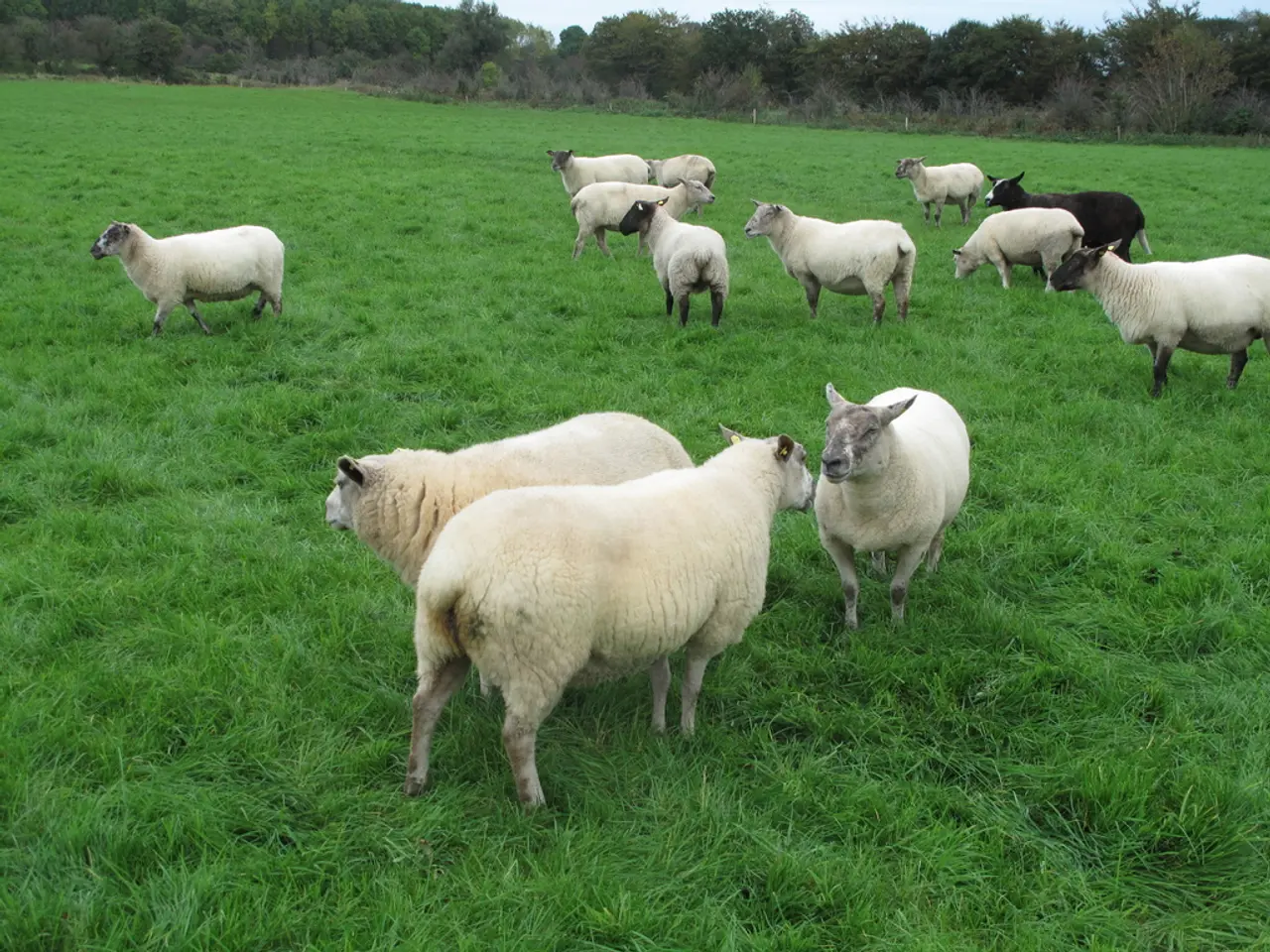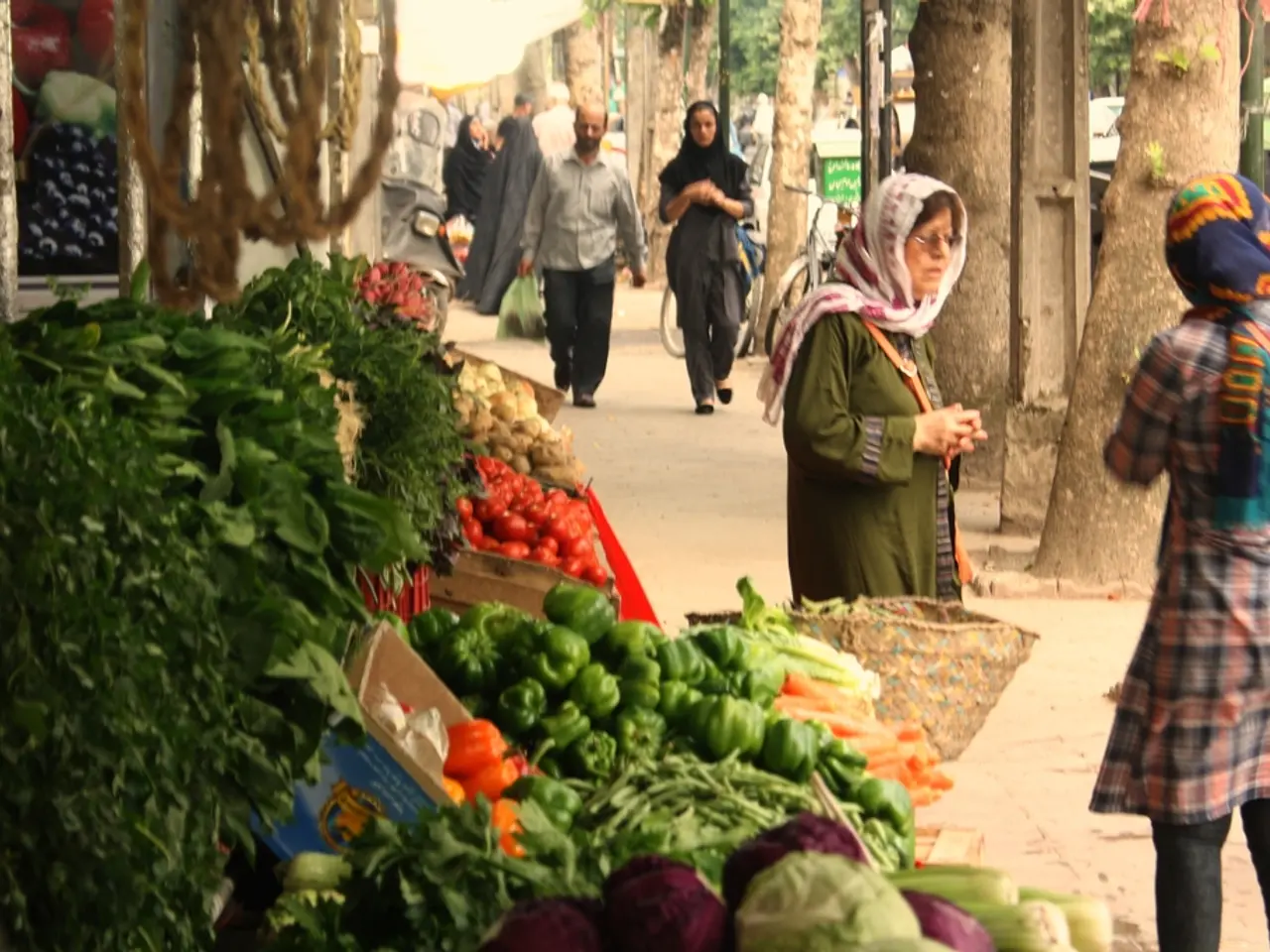Solar Farming Method: Sheep Grazing beneath Photovoltaic Systems
In a groundbreaking development, solar grazing is emerging as a promising path towards sustainable development, seamlessly integrating energy production with ecological health. This innovative approach, which uses sheep to manage vegetation under photovoltaic panels, is not only reducing maintenance costs but also offering environmental and economic benefits [1][3].
The concept of solar grazing is simple yet effective. Solar farms are used to host grazing livestock like sheep under solar panels, allowing for land use optimization where solar power is generated while maintaining productive agricultural land [1][3]. Moreover, solar panels can power farm operations, reducing reliance on external energy sources and lowering costs [2].
Integrating solar grazing into land management strategies brings numerous advantages. By diversifying land use, projects can increase overall land productivity and revenue. For instance, agrivoltaics can boost total land productivity by 35-70% [2]. The shade provided by solar arrays creates microclimates that improve water retention, reduce stormwater runoff, and provide shelter for livestock [2][5].
Sustainability is at the heart of solar grazing. Incorporating pollinator-friendly plants under solar panels supports biodiversity and enhances farm resilience [2]. Native vegetation and shaded conditions improve soil health by reducing soil temperature and increasing water retention [2]. Water conservation is another significant benefit, with agrivoltaic systems leading to water savings by reducing evaporation and runoff [2].
Successful solar grazing projects serve as shining examples of this innovative approach. Jack’s Solar Garden in Colorado combines solar power generation with the production of vegetables, herbs, and pollinator-friendly plants, becoming a national showcase for agrivoltaic practices [1]. Dos Rios Winery in Texas integrates solar panels with vineyard operations, reducing electricity costs and improving grape quality and water efficiency [2]. Agriculture Victoria's SmartFarm Tatura in Australia showcases the potential of agrisolar for horticultural activities, highlighting the collaborative approach between agriculture and renewable energy sectors [3].
Careful grazing techniques are essential to balance grazing benefits with infrastructure protection. Regular inspections and maintenance, proper fencing and grazing rotation, and sheep breed selection like Katahdin or Dorper ensure effective vegetation management under solar panels [1][4]. Community engagement plays a vital role in building support and awareness about the environmental benefits of solar grazing [6].
However, it's important to note that legal compliance is necessary for solar grazing practices, requiring proper grazing permits and adherence to local laws and land use policies [7]. Improper grazing management can potentially accelerate solar panel degradation over time [8].
In conclusion, solar grazing offers a hopeful path towards sustainable development, harmoniously blending energy production with ecological health. By combining renewable energy production with sustainable land management, this method optimizes land use and provides farmers with an opportunity to diversify income streams while promoting environmental sustainability.
- Engaging in the science of environmental-science and climate-change, researchers have discovered that renewable-energy sources like solar grazing can lead to efficient land use optimization, allowing for both energy production and productive agricultural land to coexist [1][3].
- In the domain of finance, the integration of renewable energy, such as solar grazing, into farm operations can significantly reduce reliance on external energy sources, lowering costs and enhancing overall profitability [2].
- By advocating for the adoption of solar grazing, the industry as a whole can contribute to solving environmental issues while promoting the sustainable development of the environment and the economy [1].




